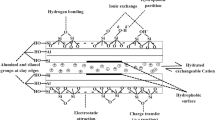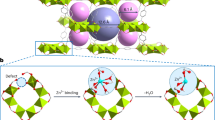Abstract
HITHERTO, benzene hexachloride has not been recommended for use on lime-washed surfaces, because it decomposes in lime slurry; it does not do so in slurries of chalk or ground limestone. Thus there was reason for believing that exposure to air would eventually make a freshly lime-washed surface suitable for spraying and, as the problem was of practical importance, the following experiment was made to settle the matter.
This is a preview of subscription content, access via your institution
Access options
Subscribe to this journal
Receive 51 print issues and online access
$199.00 per year
only $3.90 per issue
Buy this article
- Purchase on SpringerLink
- Instant access to full article PDF
Prices may be subject to local taxes which are calculated during checkout
Similar content being viewed by others
References
J. Sci. Indust. Res., 4, (2), 73 (1945).
J. Sci. Indust. Res., 4, (8), 493 (1945).
Buhrur, N. E., Arch. Biol. Tech., Curitiba, 3, 61 (1948).
Slade, R., Chem. Tr. J., 116, (3017), 279 (1945).
Author information
Authors and Affiliations
Rights and permissions
About this article
Cite this article
BOVINGDON, H. Persistence of Benzene Hexachloride as an Insecticide on Lime-washed Surfaces. Nature 167, 734 (1951). https://doi.org/10.1038/167734a0
Issue date:
DOI: https://doi.org/10.1038/167734a0



